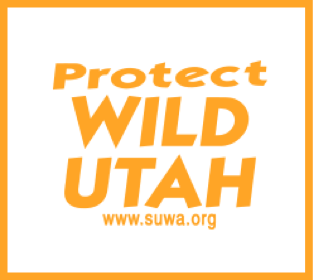|
Tell BLM It Must Protect Wilderness and Cultural Resources in the Nine Mile Canyon Area
If you’ve visited Utah’s remarkable Nine Mile Canyon over the past few years to appreciate what the Bureau of Land Management itself recognizes as “the greatest concentration of rock art sites in the U.S.A.” you know that changes are afoot. (The term “Nine Mile Canyon” is actually a misnomer the Canyon itself is over 40 miles long). This once remote area where families could spend a quiet day marveling at the “Great Hunt Panel,” the “Owl Panel,” or one of thousands of other lesser known petroglyphs, is fast becoming a heavily industrialized area with natural gas compressor stations that run 24 hours a day/7 days a week, along with dozens if not hundreds of heavy trucks running up and down the canyon at all hours of the day.
On top of these impacts to Nine Mile Canyon’s world renown historic and pre-historic sites, natural gas development is fast encroaching on the Desolation Canyon and Jack Canyon wilderness study areas and wilderness inventory areas (the areas that BLM inventoried between 1996-99 and found to have wilderness character). BLM has described the greater Desolation Canyon wilderness area as having “magnificent wilderness qualities” and an area that “represent[s] one of the largest blocks of roadless BLM lands within the continental United States.”
These impacts to date have only been the tip of the iceberg if BLM and a Denver based gas company (Bill Barrett Corporation (BBC)) have their way.
WHAT’S GOING ON?
BLM together with BBC’s contractor have prepared a draft environmental impact statement (draft EIS) to analyze the impacts from a massive natural gas development project to wilderness, cultural sites, wildlife, and a number of other important resources. The BLM is considering a BBC proposal to drill over 800 natural gas wells (from 500+ sites) in the greater Nine Mile Canyon area (an area referred to by BLM as the West Tavaputs Plateau). While no federal wells are proposed in Nine Mile Canyon itself, there are gas wells being proposed in sensitive side canyons to Nine Mile, as well as nearly 200 gas wells in wilderness study areas and wilderness inventory areas.
BLM held three public meetings in March and is now wrapping up the public comment stage. This could be the last opportunity for the public to tell BLM officials about the important wilderness and cultural resources in this area are and to urge that BLM take the extraordinary steps that these resources deserve to protect them from damage.
SUBMIT YOUR COMMENTS NOW!
|

 Southern Utah Wilderness Alliance
Southern Utah Wilderness Alliance
